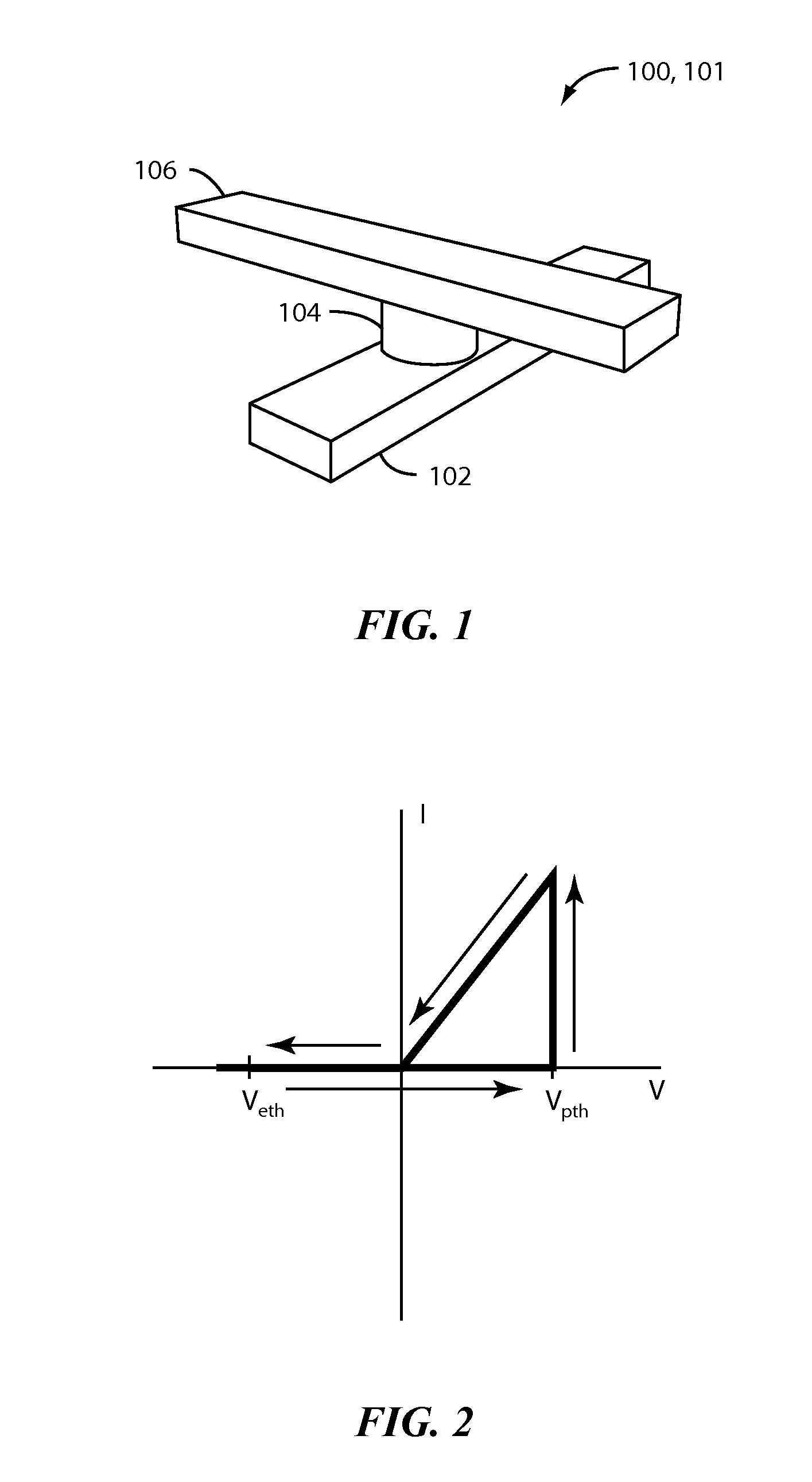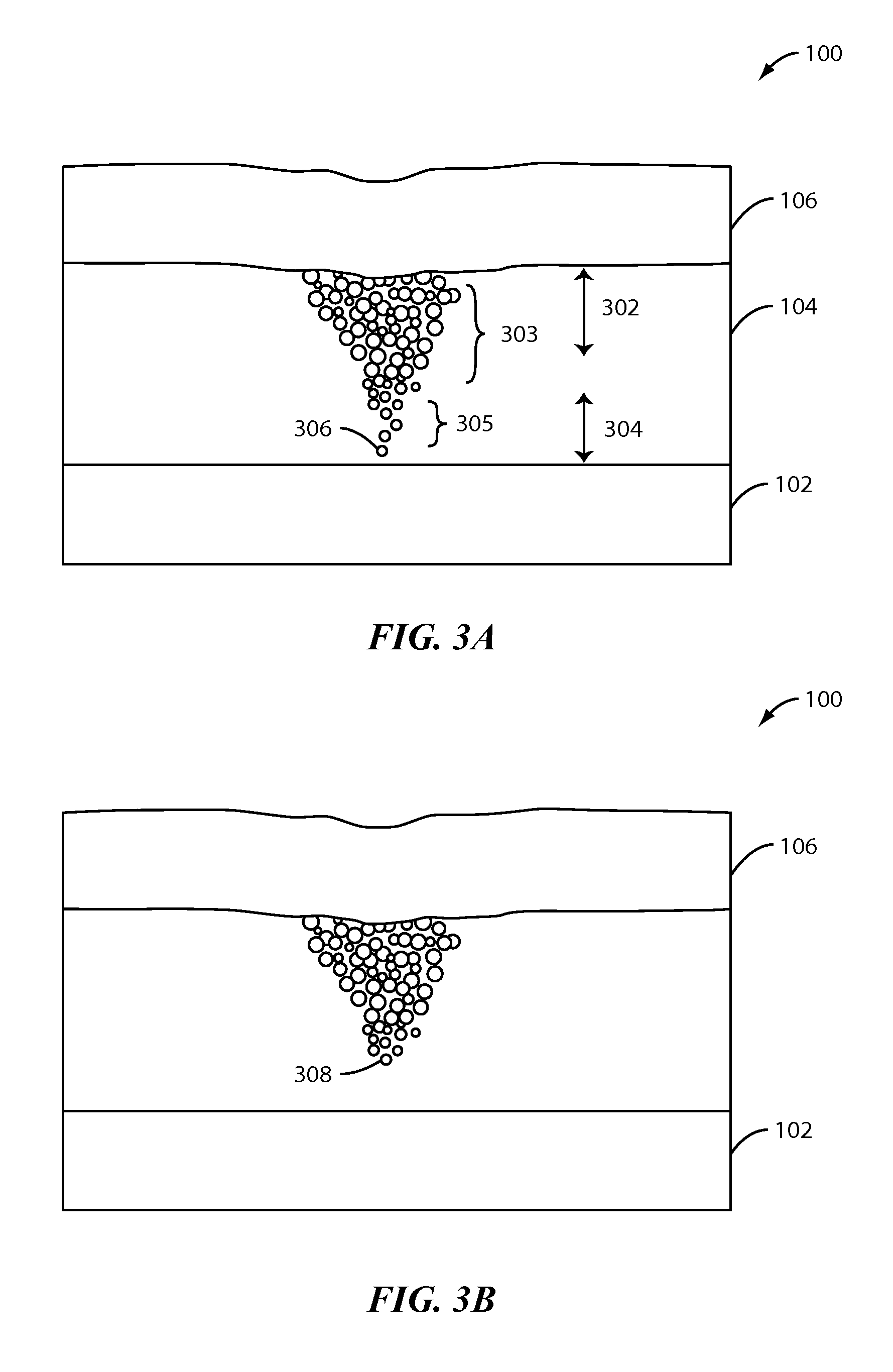RESTIVE MEMORY USING SiGe MATERIAL
a technology of sige material and restive memory, which is applied in the direction of digital storage, semiconductor devices, instruments, etc., can solve the problems of limiting production yields and reducing the resistance of a-si structures
- Summary
- Abstract
- Description
- Claims
- Application Information
AI Technical Summary
Problems solved by technology
Method used
Image
Examples
Embodiment Construction
[0024]FIG. 1 illustrates a memory cell 101 in a non-volatile solid state resistive device 100 including a bottom electrode 102, a switching medium 104, and a top electrode 106 according an embodiment of the present invention. Switching medium 104 exhibits a resistance that can be selectively set to various values, and reset, using appropriate control circuitry. Memory cell 101 is a two-terminal nanoscale resistive random-access memory (RRAM) in the present embodiment. Although not shown, one skilled in art would understand that device 100 includes a plurality of memory cells 101. One skilled in art would also appreciate that that memory cell 100 may be used as a programmable interconnect, variable capacitor or other types of devices.
[0025]RRAM is a two terminal memory having a switching medium provided between top and bottom electrodes. The resistance of the switching medium can be controlled by applying electrical signal to the electrodes. The electrical signal may be current-based...
PUM
 Login to View More
Login to View More Abstract
Description
Claims
Application Information
 Login to View More
Login to View More - R&D
- Intellectual Property
- Life Sciences
- Materials
- Tech Scout
- Unparalleled Data Quality
- Higher Quality Content
- 60% Fewer Hallucinations
Browse by: Latest US Patents, China's latest patents, Technical Efficacy Thesaurus, Application Domain, Technology Topic, Popular Technical Reports.
© 2025 PatSnap. All rights reserved.Legal|Privacy policy|Modern Slavery Act Transparency Statement|Sitemap|About US| Contact US: help@patsnap.com



